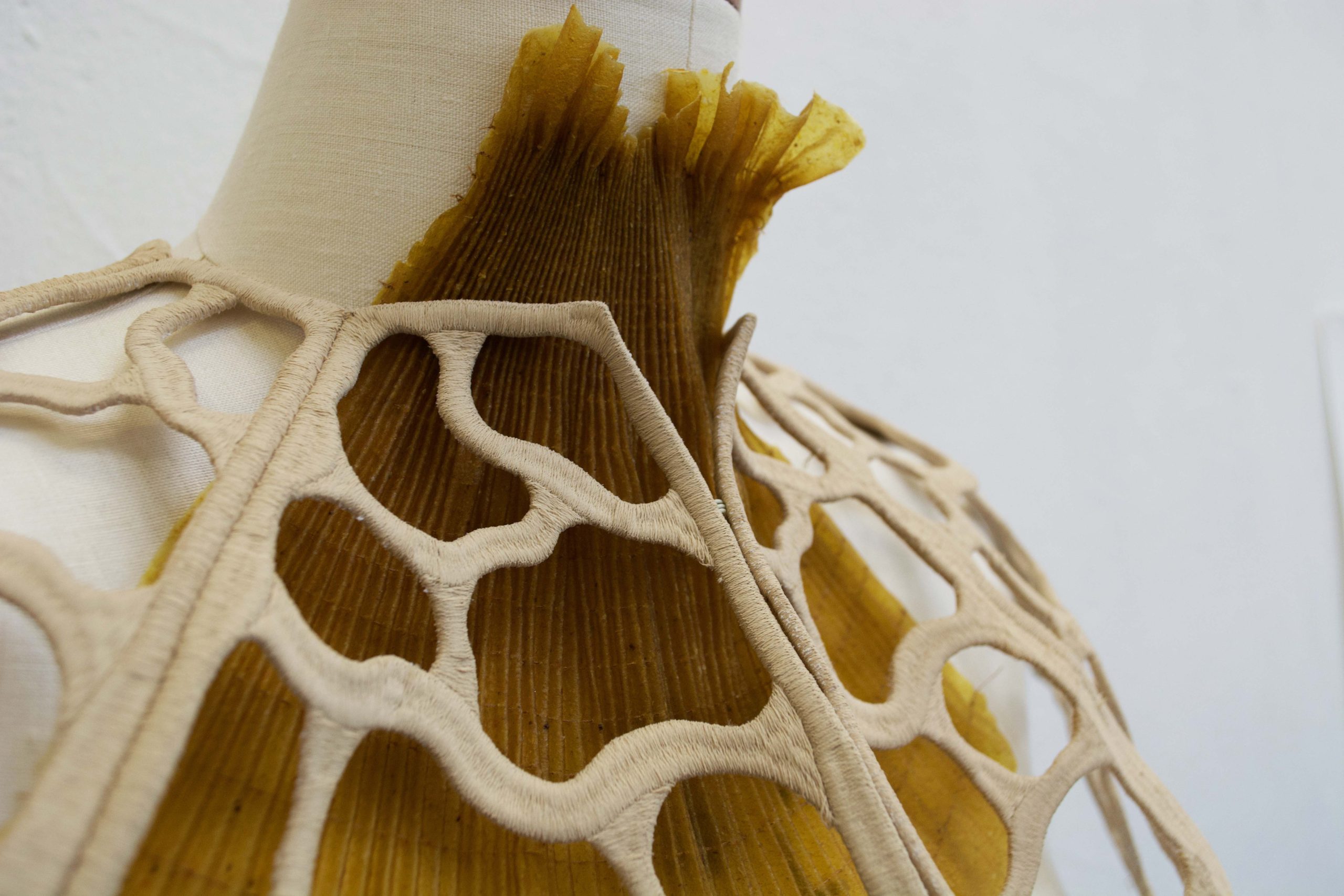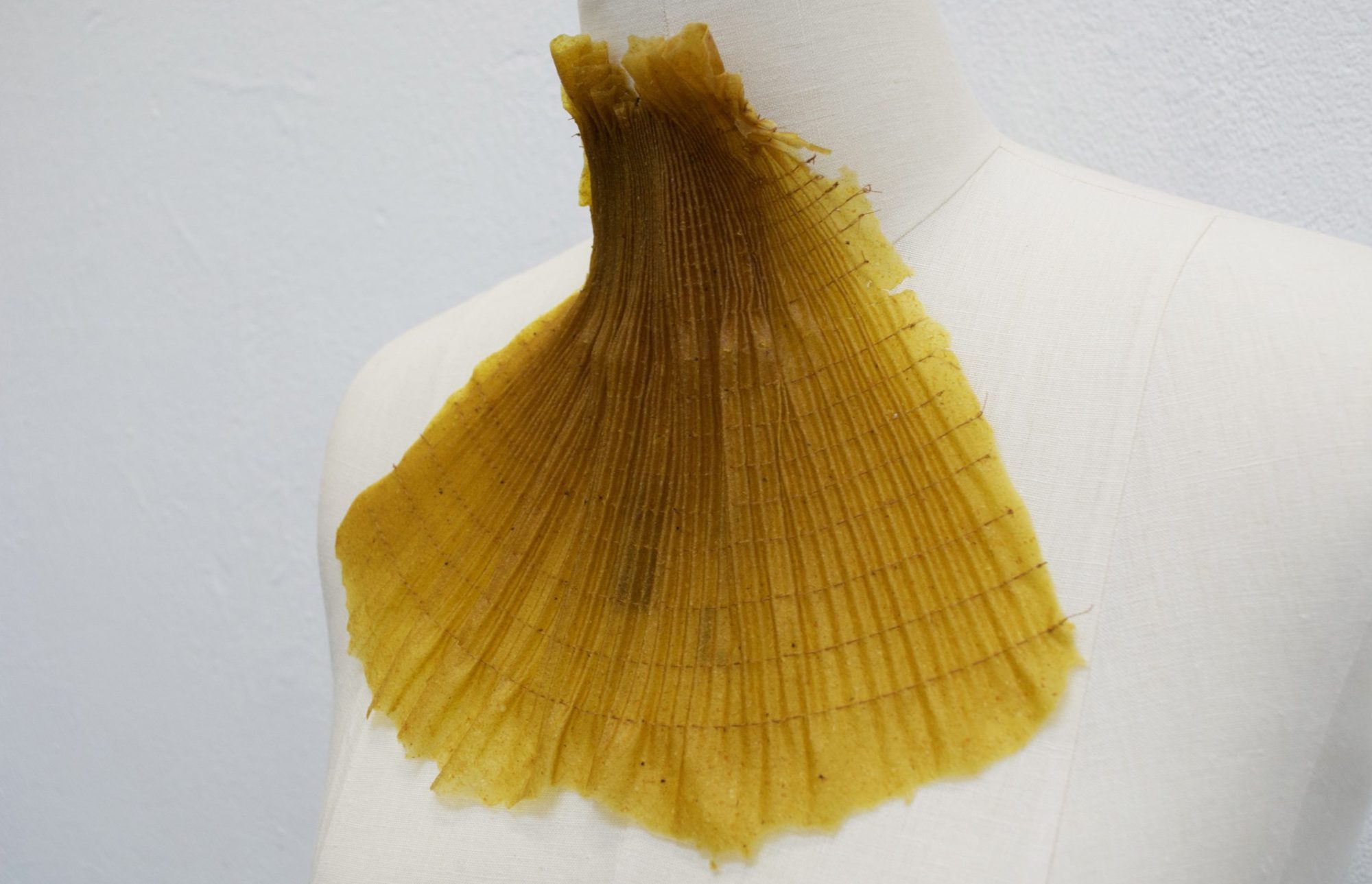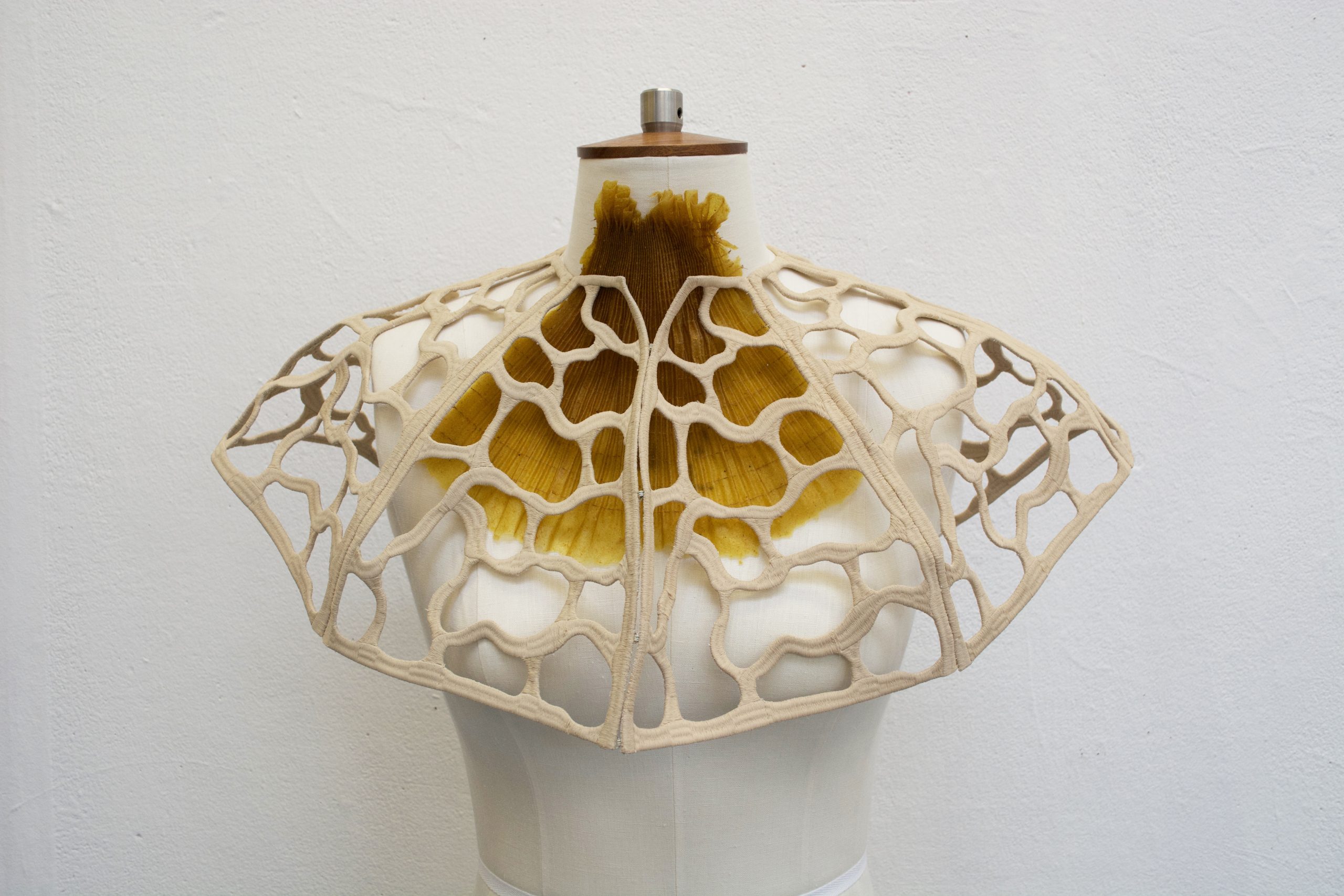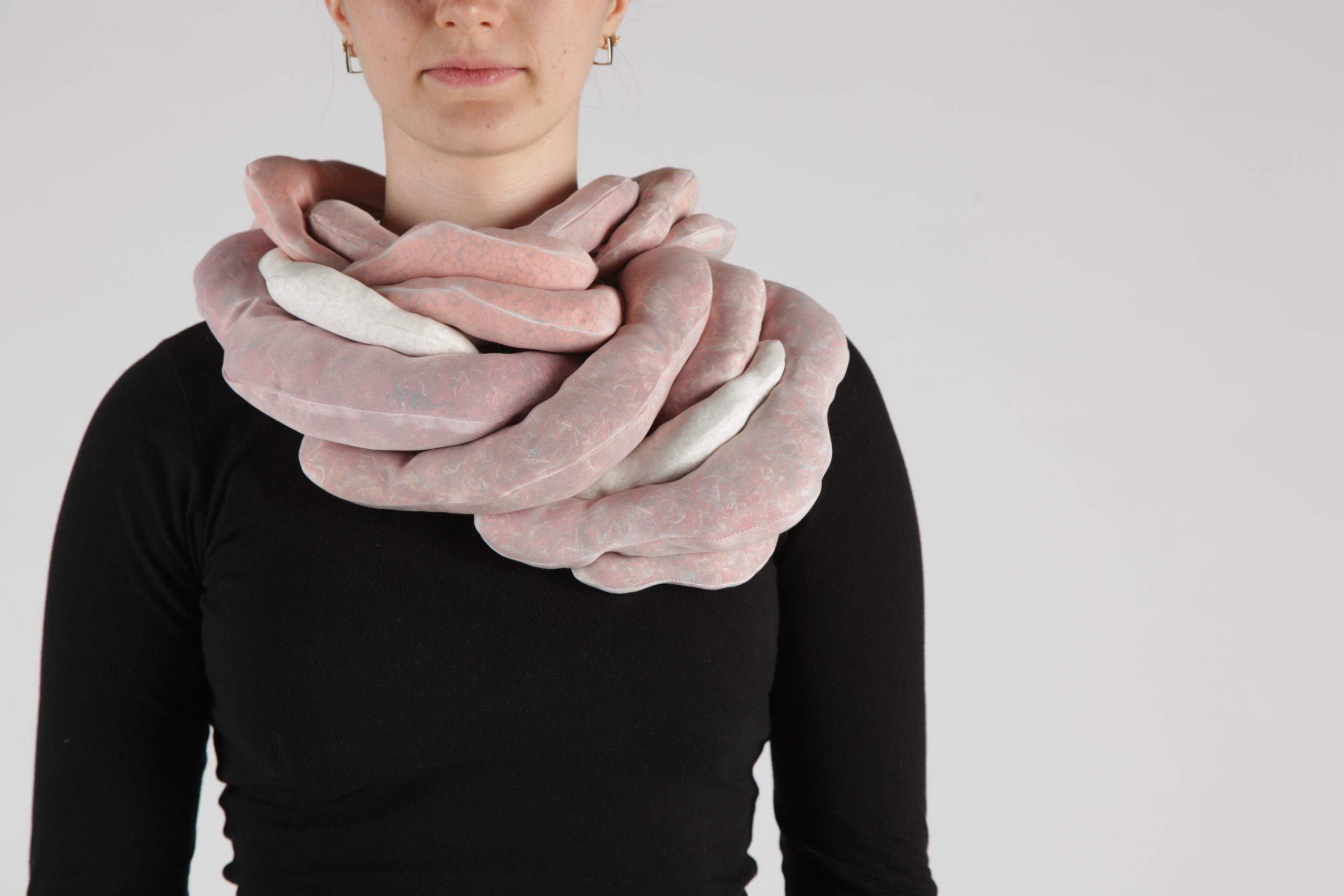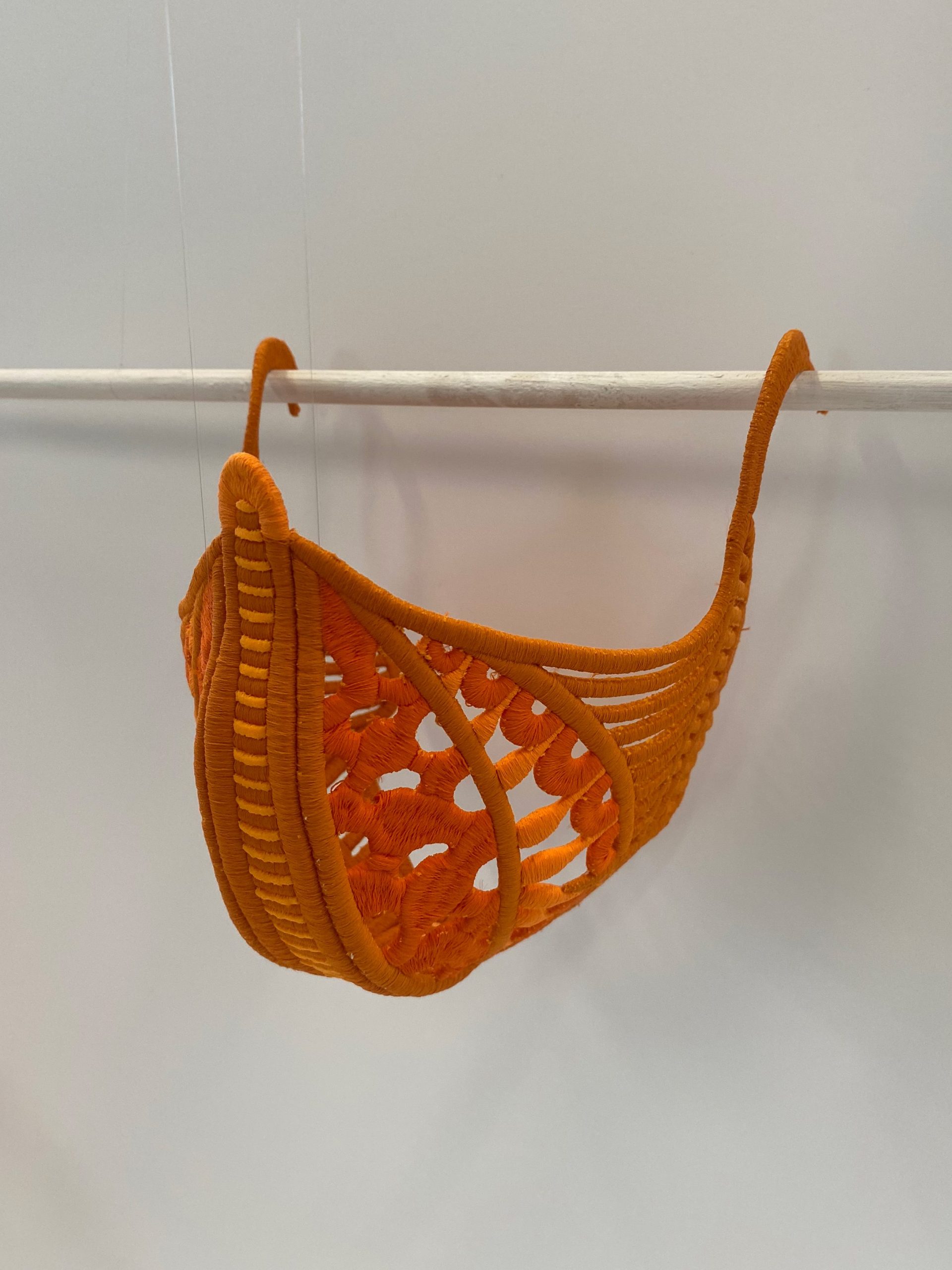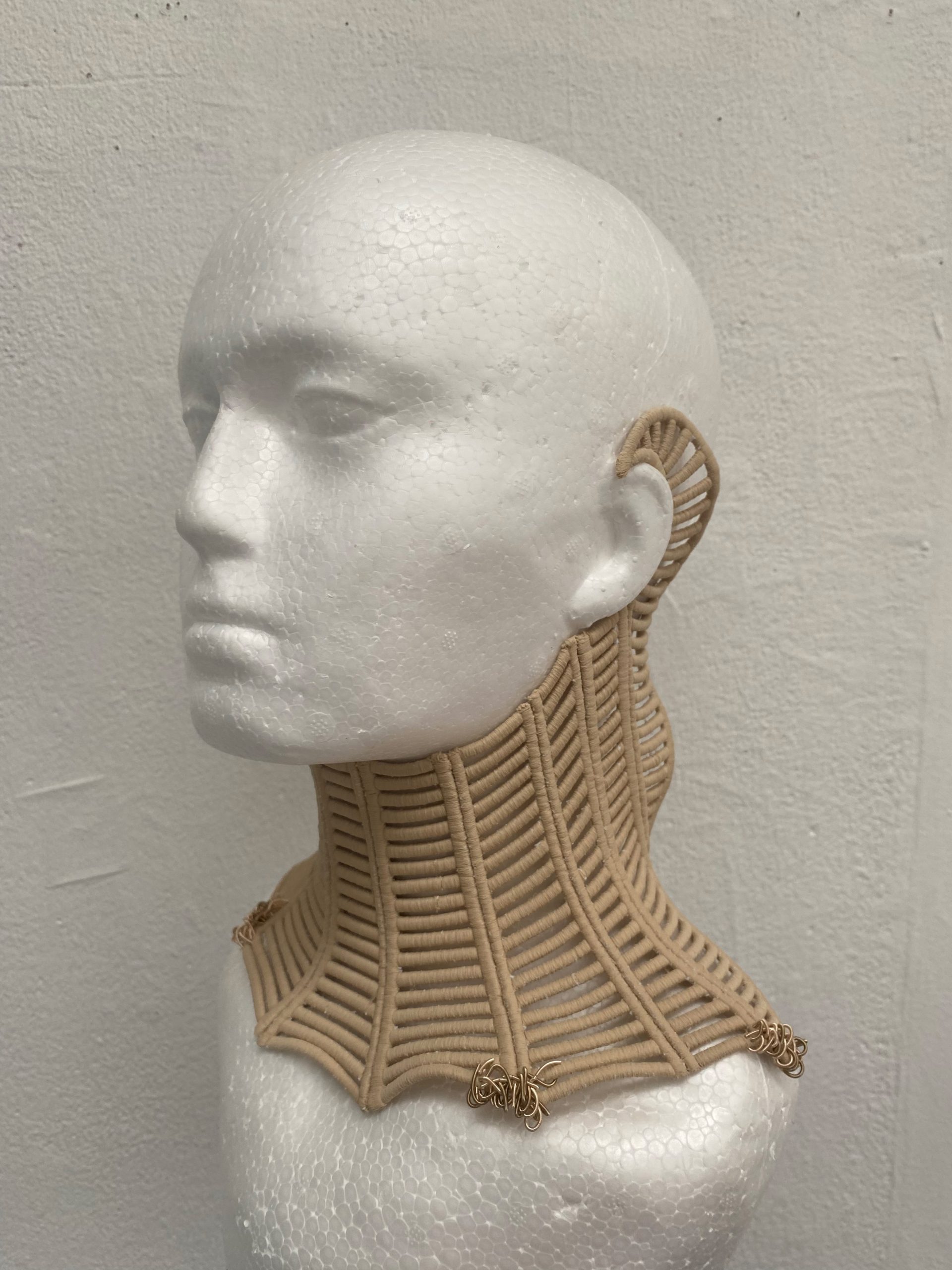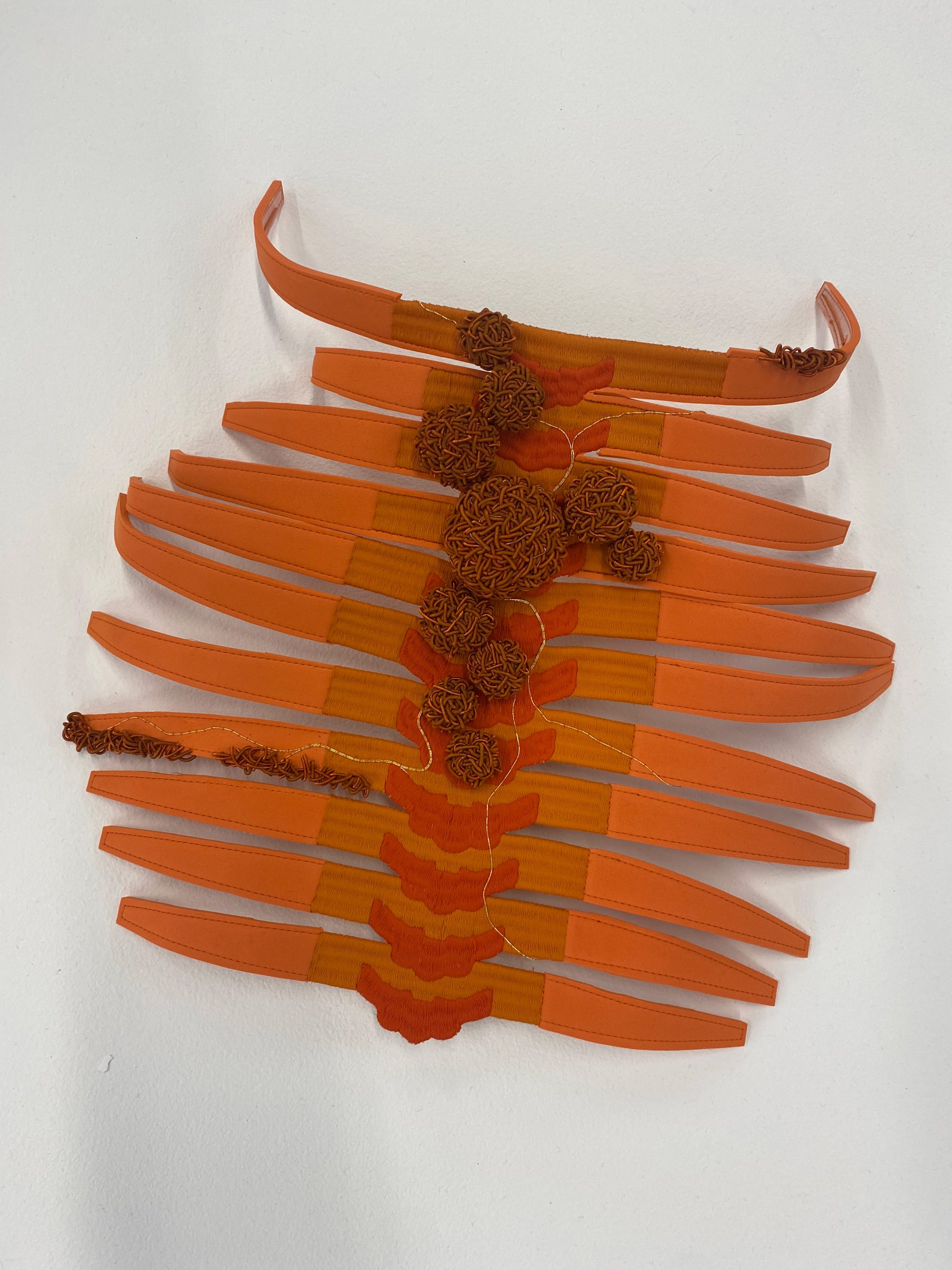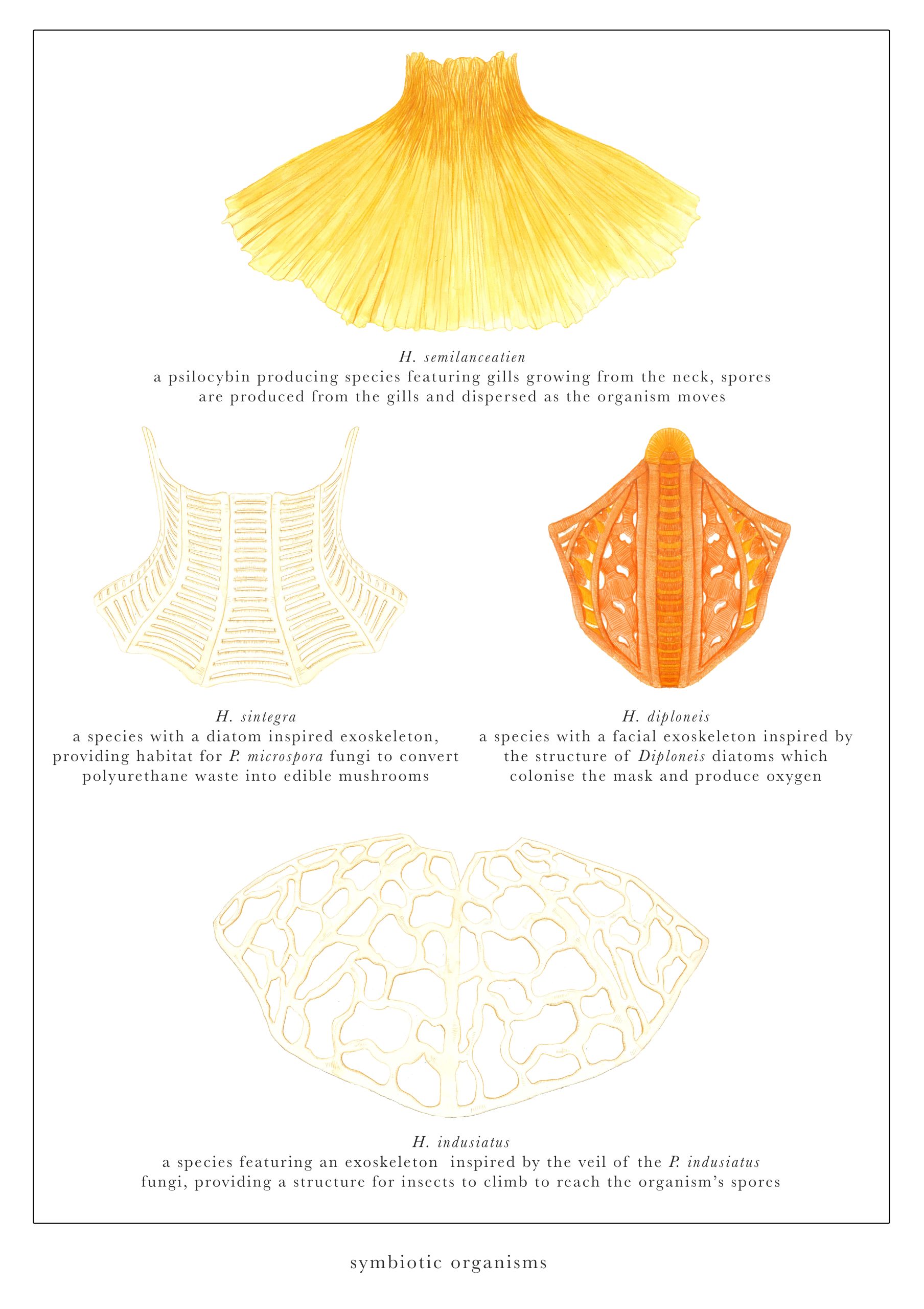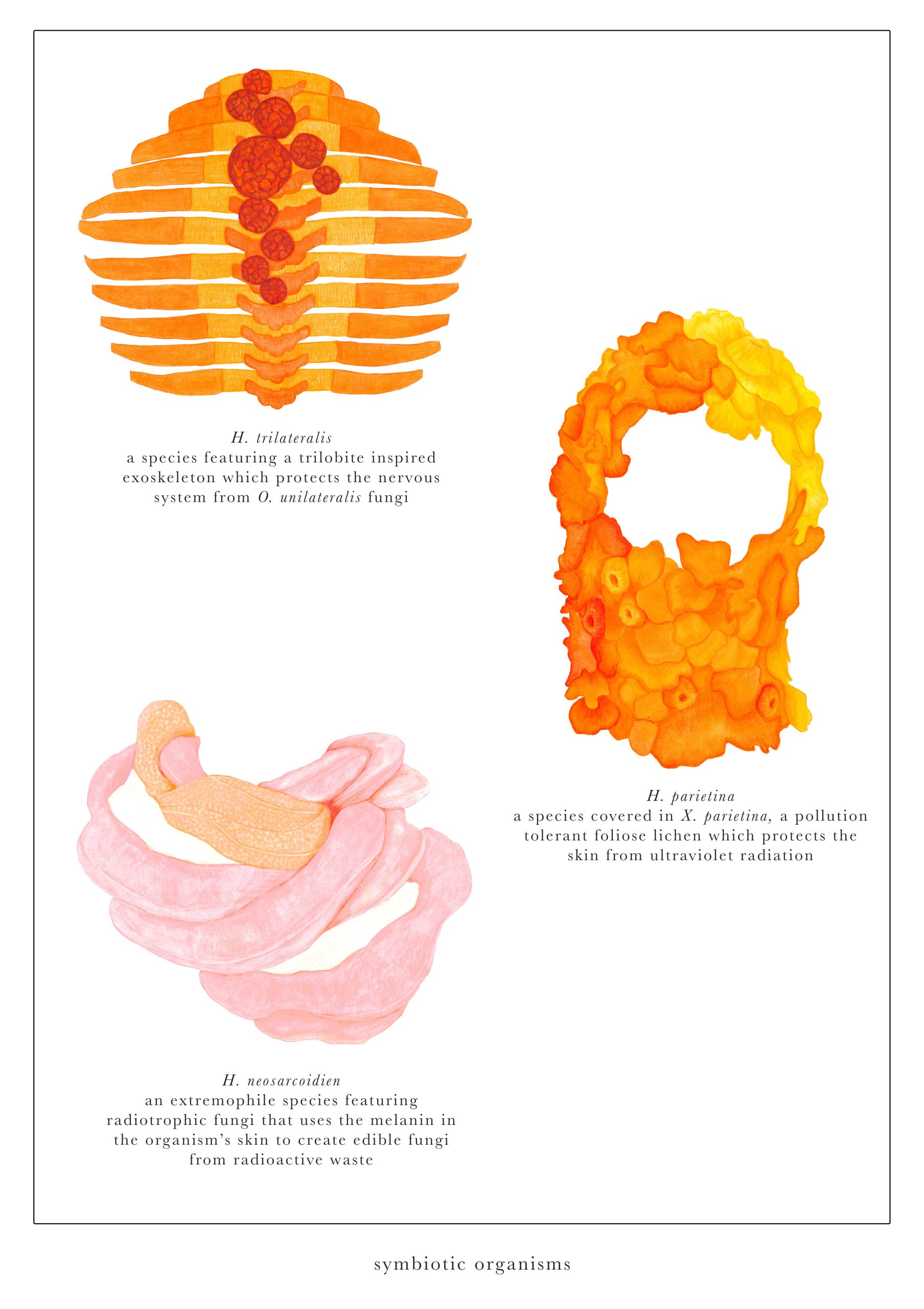The year 1,002,024
Planet Earth one million years from now. Human civilisation collapsed long ago; fungi dominate Earth’s new hierarchy and thrive on the mess left by humanity. Human habitation has been reclaimed by nature; Homo sapiens have been claimed by nature.
Homo sapiens are critically endangered; the few organisms left exist in symbiosis with fungi, lichen and algae. Welcome to the Symbiocene.
Concept
In this futuristic world, the chaos of the Anthropocene epoch resulted in the sixth global mass extinction event with less than 0.1% of the human population surviving. Natural ecosystems finally have the chance to recover. Mountains of plastic and radioactive waste are converted into chemical energy through mycoremediation.
‘Symbiocene,’ depicts the symbiotic organisms of the future. Presented as a couture accessory collection, it explores the eventual evolution of Homo sapiens with species of the Fungi and Protista kingdoms of life.
The term ‘Symbiocene,’ was coined by environmentalist Glenn Albrecht (2015) in his article ‘Exiting the Anthropocene and Entering the Symbiocene.’ The paper outlines how our current geological era of the Anthropocene is destroying earth’s ecology. It argues that new concepts for living are needed if humanity is to avoid extinction. This collection is a manifestation of what the Symbiocene could be.
The final collection
‘Symbiocene: a beautiful apocalypse,’ consists of five neckpieces, an oxygen mask and a balaclava, all depicting symbiotic relations evolved from Homo Sapiens. An A1 poster was designed explaining the concept and purpose behind some of the pieces, inspired by Ernst Haeckel’s hand-drawn scientific illustrations using watercolour and pencil.
